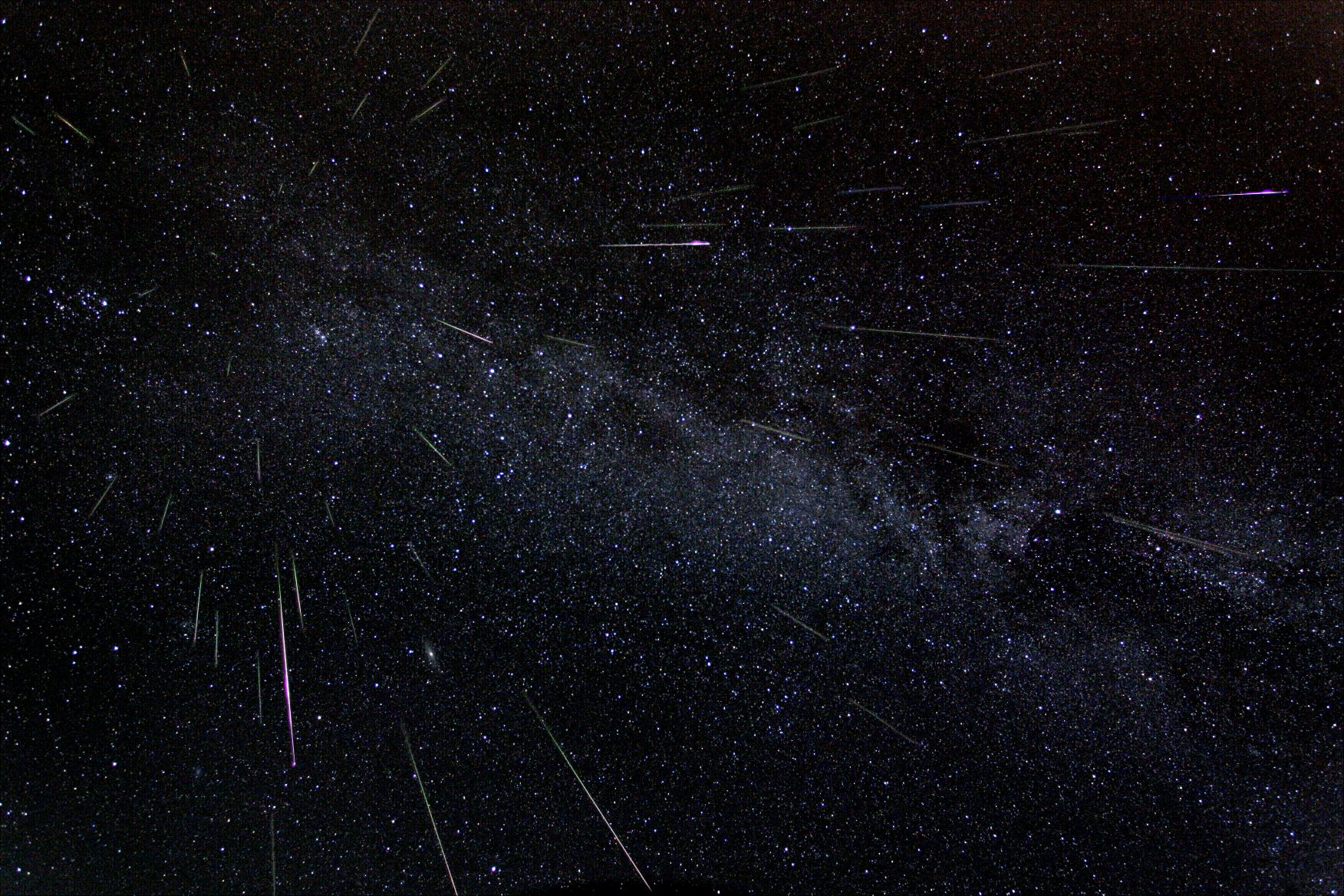The Perseid meteor shower in mid August is one of the more reliable and bright meteor showers seen in the northern hemisphere.
This year they'll be back this weekend, viewing will be mediocre, especially from North America...

radiant map - from 2002, but they'll come from same location - look for the "W" of Cassiopea low to the northeast after sunset, try to catch the time after sunset but before Moon rise (not very long right now...);
for best viewing use averted vision - ie focus on Cassiopea and look down to the right, then scan the sky around this - sweep your eyes in a 30-45 degree cone around that point and let your peripheral vision pick up any sudden changes, like a streak of light...
Abel commands, I obey: (yikes, no, the other Abel...)
The Perseids are a drawn out shower, with increases meteorite rates spread over several days, this year the peak is this weekend, saturday daytime in North America, saturday night in Europe and Asia.
One of the best viewings I have ever had of a meteor shower was of the Perseids, about a decade ago, from a low mountain on the Northern California Coast (just up from the UCSC campus).
It was a perfect night, the shower was spectacular with over a hundred bright meteorites per hour in the early evening, we had some friends a blanket and a light picnic. Very romantic. Pre-kids...
I swear one of the brighter meteorites, with a wobbly green tail, passed below us down the valley to our right, though that was almost certainly a perspective illusion. It also sizzled and fireballed quite spectacularly.
This year expect peak rates of one every one to two minutes, but best viewing will be saturday right after sunset or very early sunday morning. View should be best from the North American east coast, or a different continenty, and best north of the tropics.
The Moon is near full and will make it significantly harder to see anything, especially late evening after the Moon rises.
Leonids might be good this year, might get a mini-meteor storm around Nov 18, especially for Europe of East Coast NA observers.
Perseids are the dust trail of comet Swift-Tuttle see here for orbit, the Earth crosses the point of its orbit where the Swift-Tuttle tail swept across the Earth's orbit on its last pass in mid-August, and encounters a diffuse but enhanced stream of comet tail dust. These dust grains hitting the atmosphere at ~ 50-60 km/sec (~ 35-40 miles/sec) are what you see as they burn up in the upper atmosphere.
UPDATE: went out three times to try to catch one, friday night saw nothing (went out too early, realistically) except a rather spectacularly bright south-north low Earth orbit satellite;
satruday saw one faint perseid later in the evening, only one in the family to catch it - did see several bats and an owl though; then some idiot driver destroyed our nightvision and we went home early; sunday night tried again but the munchkins were too tired and fed up, gave up very shortly. Phooey.


And a fellow Billy Bragg devotee, no less - thanks boss! I'll explain this all to my little girl tonight.
Ever since I first saw him live in later '83 or early '84. Excellent.
You're welcome.